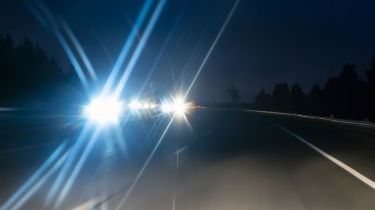Are car headlights too bright? Dazzled drivers say yes in new Govt study
The Department for Transport has published survey results showing the extent of the problem ahead of its upcoming Road Safety Strategy

The Government could be set to enforce tighter rules on car headlight design amid growing unease from drivers who are being dazzled by bright lights as the nights get darker this winter.
A new Department for Transport commissioned study has indicated that 97 per cent of drivers are 'regularly or sometimes' distracted by oncoming vehicles while 96 per cent said they thought 'most or some' headlights are too bright.
The study was launched in 2024 and carried out by the Transport Research Laboratory to examine the root causes and effects of headlight glare on UK roads. As well as surveying 1,850 UK drivers, the research used in-car instruments to measure how different variables affect the level of headlight glare experienced. It found that car position, the angle of the road surface, the type of car and the type of headlight technology all had an impact on the dazzling effects experienced when driving at night.
Recommendations from the study include public awareness campaigns, further research into the problem and potential changes to car headlight regulations. More than 50 per cent of those surveyed said that they have stopped or reduced their driving at night due to the problem of headlight glare.
A DfT spokesperson said: “We know headlight glare is frustrating for many drivers, especially as the evenings get darker. That's why we commissioned independent research to better understand the causes and impact of glare, which will inform new measures in the upcoming Road Safety Strategy.”
Due to be set out later this year, one of the many steps the Government plans to take as part of the Safety Strategy is to ban drivers over 70 who fail compulsory eye tests. Yet Downing Street was already considering tightening the rules on headlight design in order to reduce the impact of glare and the results of the TRL study would seem to support some kind of action.
The DfT said the situation is “a complex issue, so we plan to build on this work with further targeted vehicle-based research to help inform future international lighting regulations”.
Such a move would generally be supported by road-safety organisations, although the RAC’s senior policy officer, Rod Dennis, said: “Having campaigned hard for this study, we welcome its findings which independently confirm what drivers have been telling us – that rather than being an imagined phenomenon, some bright headlights do cause a glare problem.
“It’s important to remember that brighter headlights can give drivers a better view of the road ahead – so there’s a balance to be struck.”
Dr Shaun Helman from the TRL said that: “This research provides compelling evidence that glare from vehicle lighting is a genuine issue for UK drivers, and can be measured in real driving conditions.
“By combining scientific measurement with driver perspectives, we now have a clearer understanding of the conditions under which glare occurs and the factors that contribute to it. These objective findings are a first step to take glare from anecdotal complaints into the realm of scientific evaluation. Continued research will help inform UK road safety and transport policy. The long-term goal is to improve public confidence and safety when driving at night.”
In the meantime, one way authorities, such as the Driver and Vehicle Standards Agency (DVSA), are attempting to reduce glare is by cracking down on illegally retrofitted LED and xenon bulbs. These can direct light directly into oncoming motorists’ eyes, rather than on the road, if they are not calibrated properly.
The DfT said: “The DVSA has stepped up surveillance to intercept the sale of illegal retrofit headlamp bulbs for on-road use, and anyone caught could face a fine of up to £1,000.”
Did you know you can sell your car through Auto Express? We’ll help you get a great price and find a great deal on a new car, too.
Find a car with the experts



